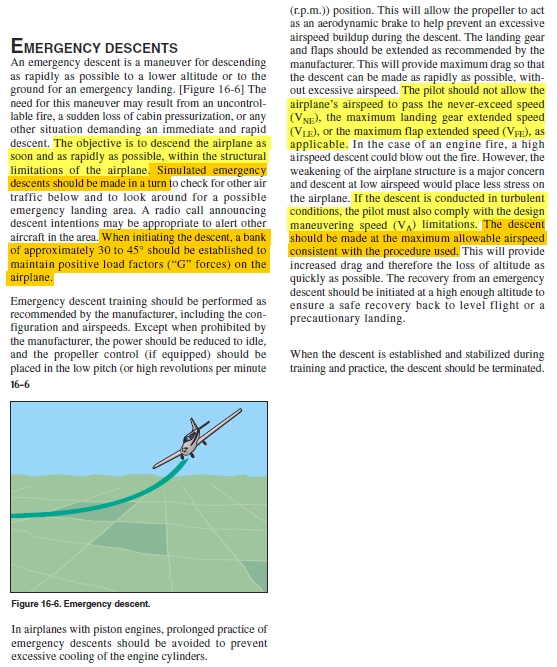Jaybird180
Final Approach
Because in a fire, the goal is save your skin, not the tin.Why do you guys want to do a steep spiral at vne? Are you angry at your airframe?
Go talk to a large drop zone.
Small turns, if needed, wings level, vne (or vle), try to keep the engine warm with mixture, cowl flaps etc.
Slips ain't going to help much, and a slip near vne is sure as heck not healthy for the airframe.
If a CFI was Doug steep spirals or slips at, or near, vne at my old school, he'd be toast and best not try to EVER use me as a reference.


